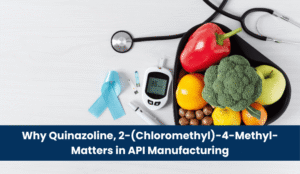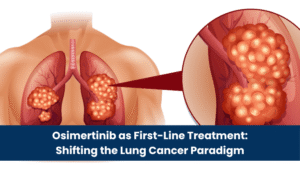It is overwhelming to live with a chronic viral illness such as HIV or Hepatitis B. The daily care, the necessity of successful treatment, and the worries about the long-term health condition – it is too much. But what can be done when there is a pill to combat these types of viruses more effectively and be gentler on the body at the same time? That is the promise of Tenofovir Alafenamide Fumarate (TAF). Let’s dive into why this specific active pharmaceutical ingredient is changing the landscape of antiviral therapy.
What Is Tenofovir Alafenamide Fumarate (TAF)?
Simply put, Tenofovir Alafenamide Fumarate is the powerhouse behind certain modern antiviral medications. It’s not the pill you pick up from the pharmacy itself, but rather the crucial active pharmaceutical ingredient (API) – the active component – that makes those medicines work. Think of it as the engine inside the car. TAF is a newer, more refined version of an older drug (tenofovir disoproxil fumarate, or TDF), specifically engineered to be more targeted and efficient.
Its development represents a significant stride forward in pharmaceutical manufacturing. Unlike older approaches, creating TAF requires sophisticated processes to ensure its unique structure delivers its benefits precisely. As a leading API manufacturer, companies specialising in complex molecules like TAF play a vital role in bringing these advanced treatments to patients. The quality and consistency of the api raw material are paramount for the safety and efficacy of the final medication.
How Does Tenofovir Alafenamide Fumarate Work?
Okay, science time – but let’s keep it clear! TAF belongs to a class of drugs called nucleoside reverse transcriptase inhibitors (NRTIs). Viruses like HIV and Hepatitis B need to copy their genetic material to multiply inside your cells. TAF cleverly throws a wrench into that process.
Here’s the smart part: TAF is a “prodrug.” It’s designed to remain relatively inactive until it reaches its target, inside the infected cells. Once inside, your body’s enzymes convert TAF into its active form, tenofovir diphosphate. This active form mimics a building block the virus needs. When the virus attempts to replicate itself, it mistakenly uses tenofovir diphosphate instead of the actual nucleotide. This faulty block halts the copying process, preventing the virus from multiplying further.
This targeted delivery is the genius of the Tenofovir Alafenamide Fumarate api. Because it’s activated primarily inside the target cells, less of the drug circulates freely in your bloodstream compared to older versions. This is a core reason behind its improved safety profile, which we’ll explore shortly. High-precision api manufacturing is essential to achieve this specific chemical structure and behaviour, a speciality of dedicated active pharmaceutical ingredient companies.
What Conditions Does Tenofovir Alafenamide Fumarate Treat?
TAF isn’t a one-trick pony. Its primary battlefields are two significant viral infections:
- HIV: Tenofovir Alafenamide Fumarate for HIV is a cornerstone of modern antiretroviral therapy (ART). It’s almost always used in combination with other antiretroviral drugs, forming highly effective regimens that suppress the virus to undetectable levels. This not only preserves health but also prevents the transmission of disease. Reaching and maintaining viral suppression is the primary goal of HIV treatment today, and TAF-based regimens are key players.
- Chronic Hepatitis B (CHB): Similarly, tenofovir alafenamide fumarate is a potent first-line treatment for Hepatitis B. It effectively suppresses the Hepatitis B virus, reducing liver damage, lowering the risk of serious complications such as cirrhosis and liver cancer, and helping patients maintain better liver health in the long term.
The versatility and potency of TAF underscore the importance of sourcing high-quality APIs from reputable pharmaceutical ingredient manufacturers. Consistent quality in the api raw material directly translates to reliable performance in the medications patients depend on daily.
Why Tenofovir Alafenamide Fumarate Is Considered Safer?
This is where TAF truly shines, offering significant hope. Its predecessor, TDF, was effective but came with notable concerns about long-term effects on bones and kidneys. TAF was specifically designed to mitigate these risks.
Remember the targeted delivery we discussed? Because TAF delivers more of the active drug directly into the target cells (lymphocytes for HIV, hepatocytes for Hepatitis B), much less circulates in the blood plasma.
This means:
- Kidney Safety: TAF puts significantly less strain on the kidneys. Studies show a much lower risk of kidney-related side effects, including declines in kidney function and loss of important minerals, compared to TDF.
- Bone Safety: TAF is also much gentler on bones. It causes significantly less loss of bone mineral density, which is vital for long-term bone health and reducing fracture risk, especially as patients age.
Essentially, TAF offers comparable, often superior, antiviral power with a significantly reduced burden on these vital organs. It enables effective viral suppression, with a focus on preserving overall patient health and quality of life – a truly smarter approach. This safety advantage is a direct result of the sophisticated chemistry behind the Tenofovir Alafenamide Fumarate api, underscoring the value of innovation driven by expert active pharmaceutical ingredient manufacturers.
Possible Side Effects of Tenofovir Alafenamide Fumarate
No medication is fully free of potential side effects, and TAF is no exception. It’s generally well-tolerated, but it’s crucial to be informed. Common side effects can include headache, nausea, diarrhoea, and fatigue, although these often subside over time.
More serious, but less common, side effects can occur. These can include:
- Lactic Acidosis/Severe Hepatomegaly: Rare, but serious conditions involving a buildup of lactic acid in the blood and enlarged liver.
- Exacerbation of Hepatitis B: If treatment is stopped, Hepatitis B can flare up severely. Never stop medication without your doctor’s guidance.
- New or Worsening Kidney Problems: Although TDF poses a much lower risk, monitoring kidney function remains essential.
- Bone Density Changes: Again, the risk is lower than that of TDF, but monitoring may still be advised, especially for individuals with existing risk factors.
This is not an exhaustive list, and individual experiences vary. Always discuss potential side effects thoroughly with your treating physician. They will monitor your health regularly through blood tests to ensure safety and effectiveness. Rigorous quality control by pharmaceutical ingredient manufacturers and active pharmaceutical ingredient companies during API manufacturing helps minimise risks associated with impurities or inconsistencies, contributing to overall medication safety.
Partnering for Healthier Futures: The Bulat Pharmaceutical Commitment
Tenofovir Alafenamide Fumarate offers potent suppression for HIV and Hepatitis B with significantly reduced kidney and bone risks compared to older treatments, enabling safer long-term management. This evolution relies on high-quality active pharmaceutical ingredients. As a trusted API manufacturer, Bulat Pharmaceutical upholds stringent pharmaceutical manufacturing standards for the Tenofovir Alafenamide Fumarate api and raw materials. Understanding treatments like Tenofovir Alafenamide Fumarate for HIV and Hepatitis B empowers patients – talk to your doctor.






